You Are Caught in a Severe Storm in Your Boat: Crucial Steps to Ensure Safety
Boating can be an enjoyable and thrilling experience, but getting caught in a severe storm on the water can quickly turn a pleasant day into a dangerous situation. Understanding how to react and handle such a scenario is crucial for the safety of both the boat and its passengers. In this article, we will discuss the appropriate steps to take when faced with severe weather while out on the water, including boat preparation, navigation techniques, and ensuring the safety of all on board.

As a boat owner or operator, it is important to keep an eye on the weather forecast and be aware of any potential storm threats. Despite these precautions, unexpected storms do occur, and it's essential to know how to react when caught in one. Severe weather conditions can change rapidly, and the ability to stay calm, assess the situation, and take appropriate action could make all the difference in ensuring a safe outcome.
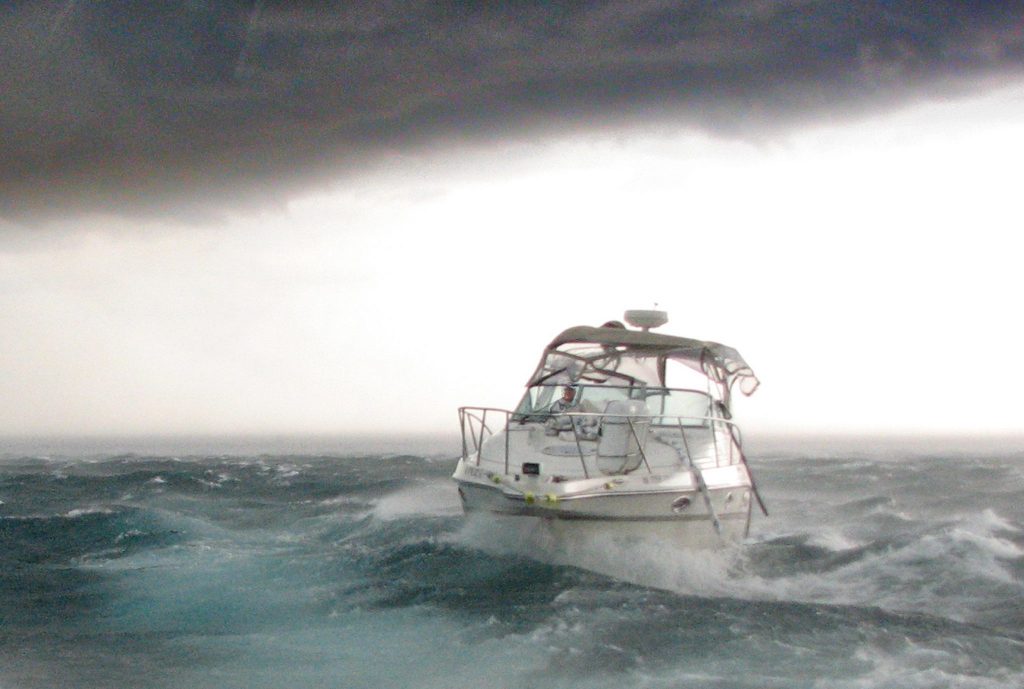
Before setting out on the water, it is crucial to familiarize oneself with the equipment and safety procedures essential for boating in severe weather. Knowing how to properly prepare the boat, navigate the waters, and communicate with passengers is essential for managing such situations. By understanding these factors and putting them into practice, you can minimize the risks and increase the chances of staying safe while boating during a severe storm.
Key Takeaways
- Always monitor weather forecasts and be aware of potential storm threats before going boating
- Familiarize yourself with essential equipment and safety procedures for handling severe weather on the water
- Maintain calm and effective communication with passengers during a storm to ensure their safety and well-being

Understanding the Weather
When out on the water, it is crucial to understand the weather conditions and be able to recognize the signs of severe weather. Knowing these signs can help boaters take the necessary precautions to ensure safety for themselves and their passengers.
Recognizing Severe Weather Signs
One of the most common forms of severe weather at sea is thunderstorms. These storms are usually accompanied by dark clouds and vertically rising clouds such as cumulonimbus clouds. Being aware of the different types of weather warnings is another crucial component in recognizing severe weather. The National Oceanic and Atmospheric Administration (NOAA) issues several types of warnings that boaters should be familiar with:
- Gale Warning: Winds of 39-54 mph (34-47 knots) are expected within the specified area in the next 24 hours.
- Storm Warning: Winds of 55-73 mph (48-63 knots) are expected within the specified area in the next 24 hours.
- Hurricane Warning: Winds of 74 mph (64 knots) or greater are expected within the specified area, usually within 36 hours.

Other relevant warnings provided by the NOAA include:
- Tropical Storm Warning: Winds of 39-73 mph (34-63 knots) related to a tropical storm are expected within the specified area, usually within 36 hours.
- Special Marine Warning: A sudden increase in wind speed to at least 34 knots, accompanied by gusts, large hail, or waterspouts, and lasting from a few minutes to a few hours.
- Small Craft Advisory: Sustained winds or frequent gusts of 20-33 knots are expected, making conditions hazardous for small and inexperienced craft operators.
The NOAA provides these warnings through NOAA broadcasts and marine weather forecasts. To stay updated about the weather conditions while at sea, it is advisable to regularly tune in to the NOAA broadcasts and check the marine weather forecasts.
Overall, understanding the weather patterns and being aware of the severe weather signs is crucial for boaters. Staying informed about weather warnings and closely observing the surrounding environment can help boaters navigate safely and avoid the potential hazards associated with severe weather conditions at sea.

Preparation Before the Storm
Safety Gear
In anticipation of severe weather, prepare your boat and passengers by gathering appropriate safety gear. Ensure each person onboard has a life jacket. Besides life jackets, have a well-stocked first aid kit, and foul-weather gear such as waterproof jackets and pants. It is crucial to have signaling devices, such as flares and a whistle, to attract attention in case of emergency. A life raft may also be necessary, depending on the boat size and the storm's intensity.
For added safety, ensure that harnesses are available for crew members to secure themselves in rough weather. Additionally, consider carrying bailers, buckets, or manual pumps to remove water from the boat during a storm.

Checking Boat's Equipment
Before entering any potential stormy conditions, inspect essential equipment on the boat. Check the boat's VHF radio, radar, and lightning protection systems for proper functionality. The VHF radio allows you to communicate with the coast guard or nearby vessels in case of emergency, while radar can help you navigate and avoid obstacles.
Inspect the boat's anchor to ensure it is properly secured and ready for deployment if necessary. A reliable anchor can help keep the boat in place during a storm.
Check for any hatches and canvas on the boat and make sure they are securely fastened to prevent water ingress and protect the boat's equipment. Test the bilge pump system to ensure it can remove water effectively from the boat's interior.
Confirm that the boat's navigation lights are in working order, as they will be vital for visibility in dark and stormy conditions. Also, verify that the boat's fire extinguishers are up to date and easily accessible.
By preparing with the proper safety gear and checking the boat's equipment, you can increase the chances of navigating a storm safely and effectively.
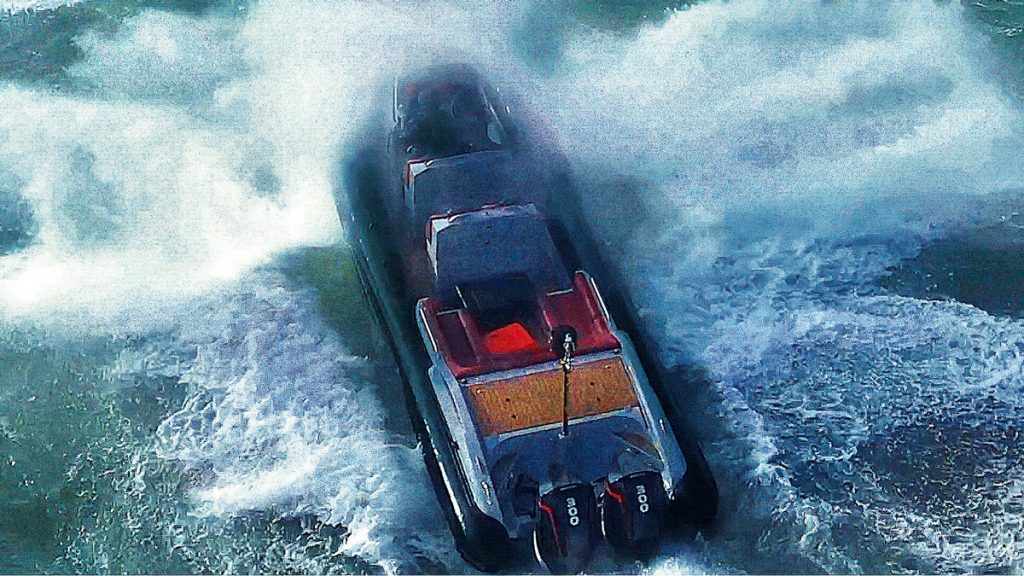
Navigating Through the Storm
During a severe storm, boaters need to take appropriate actions to ensure the safety of their passengers and themselves. This section focuses on essential steps to follow while navigating through stormy conditions.
Controlling the Vessel
In the event of a storm, it is crucial to maintain control of your boat. Begin by reducing your speed to maintain better steerage and lessen the impact of waves. However, keep enough power to maintain headway and steering. Slowly adjust your course and head into the wind at a 45-degree angle to reduce stress on the vessel. Keep an eye on the wind direction and set your boat accordingly to avoid broaching or losing control of your path.
Turn on your navigation lights to increase visibility during the storm. Continuously monitor any electronics and channels to stay informed about the weather conditions. Close all hatches, windows, and doors to minimize water ingress and secure any loose gear. If the boat has a Bimini top, lower it to decrease wind resistance and prevent potential damage.

Lightning Safety Measures
Lightning poses a significant risk to boaters, especially those in open boats. Implementing safety measures is essential to reducing potential harm. One critical step to take is installing a lightning grounding protection system on your boat to mitigate this risk. This system will direct lightning strikes away from the boat's occupants, reducing the possibility of injury or electrical damage.
During a storm, stay away from metal objects like steering wheels, railings, and antennas as they can conduct electricity. Disconnect any power cords and turn off your boat's electronics to prevent damage. Encourage passengers to move towards the boat's center, away from any metal objects and maintain a low posture to minimize exposure.
Although boating in a storm can be challenging, maintaining control of your vessel and taking the necessary precautions can significantly increase safety during such events. Remember to stay informed about weather conditions, and always prioritize the well-being of your passengers and yourself.

Handling Waves and Wind
While boating, it's crucial to know how to handle large waves and high winds that may arise during severe storms. In this section, we'll discuss strategies for managing large waves and dealing with high winds to ensure the safety of everyone on board.
Managing Large Waves
When operating a boat in large waves, it's essential to head into the waves at a slight angle and reduce your speed. This approach helps to maintain control and prevents the boat from falling off a wave or experiencing a wave breaking over the stern 1.
Hull type plays a significant role in how a boat reacts to the current and the large waves. Make sure to familiarize yourself with your boat's hull type and its characteristics before heading out onto the water.
In addition, always have a safety plan in place. Ensure that life jackets are readily accessible and that passengers are aware of their locations. Life jackets must be worn by those on board if the water or weather conditions become too dangerous.
Dealing with High Winds
High winds can also pose a threat to boaters. To prepare your boat for high winds, slow down but maintain sufficient power to retain headway and steering. Close all hatches, windows, and doors to minimize the chance of swamping, and stow away any unnecessary gear2. Additionally, turn on your boat's navigation lights to increase its visibility to other vessels.
When facing high winds, it's essential to evaluate the storm's intensity3. Determine the direction of the winds, the size of the waves, and the appearance of clouds to better understand the weather conditions and take appropriate actions.
Always keep an eye on the weather forecast before and during your boating trip to be prepared for any sudden changes in the environment. It's crucial to have open communication with your passengers and educate them about safety measures in case of severe weather conditions.
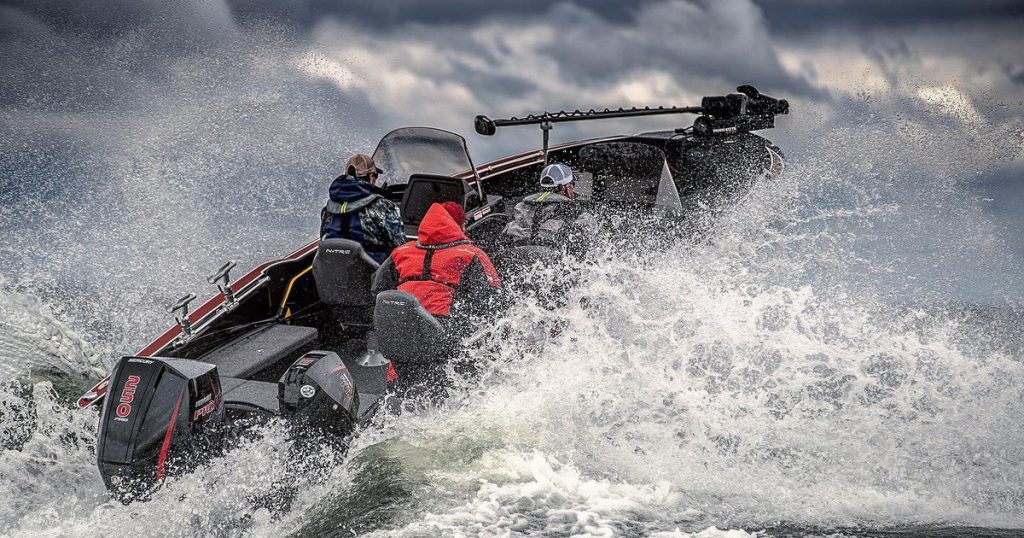
Ensuring Passenger and Self Safety
Preventing Injuries
Safety is of utmost importance when caught in a severe storm on a boat. One crucial aspect to consider is preventing injuries to both passengers and oneself. First, make sure everyone on board is wearing a USCG-approved life jacket, as these can provide added security and buoyancy.
In addition to life jackets, having all passengers, and especially the captain, wear harnesses can significantly decrease the risk of injury. Harnesses ensure individuals remain securely attached to the boat, even when facing strong winds and high waves. Also, keep a well-stocked first aid kit on board to attend to any minor injuries that may occur during the storm.
Maintaining a stable environment is crucial for everyone's safety. When navigating through rough waters, position the bow at a 45-degree angle to the oncoming waves, which helps provide a smoother and more stable ride.
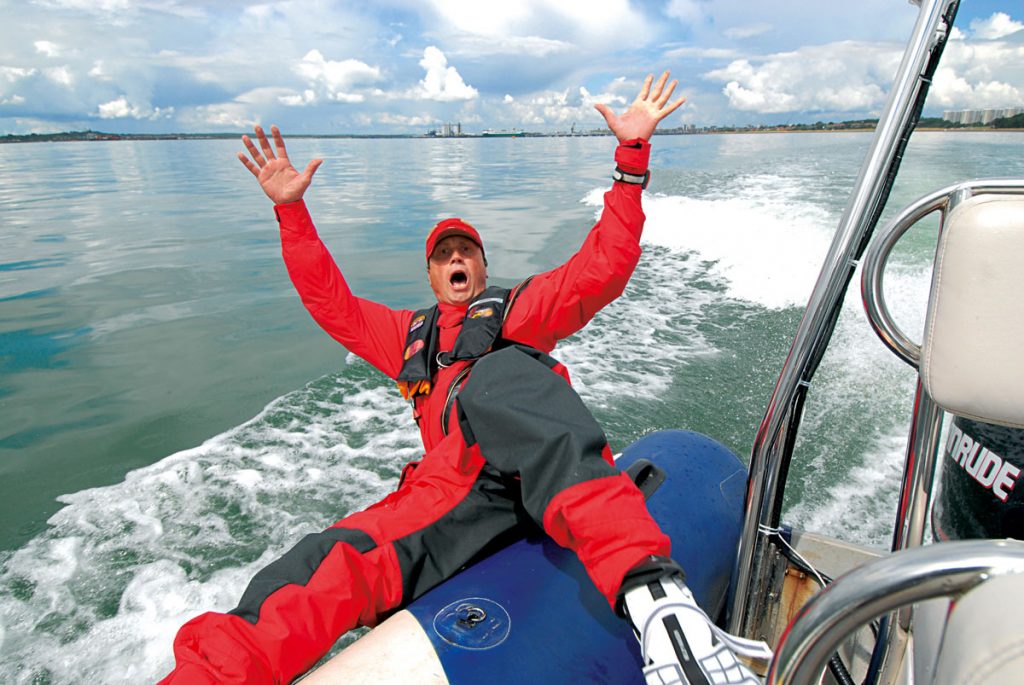
Avoiding Overboard Accidents
One of the primary concerns during a severe storm is people falling overboard. To avoid such accidents, instruct passengers to stay seated, hold onto the boat's handrails, and avoid standing near the edge of the vessel.
In case someone does fall overboard, having additional life preservers on board can be instrumental in their rescue. Equip the boat with throwable floatation devices and ensure everyone knows their location and how to use them.
Following these safety measures can significantly help you and your passengers stay secure during a severe storm on a boat. By being proactive, you can minimize the risk of injuries and ensure everyone's well-being.

Post-Storm Procedures
Checking for Damage
After the storm has passed, take the time to thoroughly inspect your boat for any damages it may have sustained. Check all windows, doors, and ports to ensure they are still properly sealed and functioning. Look for any signs of flooding in the cabins and take appropriate measures to clean up and dry out the space.
Ensure that power cords are still securely connected and functioning properly. Examine the railing for any damages, such as bends or breaks, which could indicate the need for repairs. Pay close attention to the hull and deck for signs of cracks or other structural damage.
Use visual aids, such as photos, to document any damage you come across. This information can be helpful in the future for insurance or repair purposes.

Seeking Help if Needed
If you discover any damages or something that seems potentially dangerous, do not hesitate to seek professional assistance. Reach out to a nearby marina, boat repair facility, or even a fellow boater with experience in dealing with post-storm damage.
Keep in mind that it's crucial to address any damages as soon as possible in order to maintain the safety and integrity of your vessel. By acting quickly and confidently, you'll ensure that your boat remains in top condition and ready for future outings.

Conclusion
In the face of a severe storm while boating, prioritizing safety is crucial. It is essential to maintain a clear mind and follow established guidelines to minimize the risks associated with adverse weather conditions.
Firstly, assess the storm's intensity and determine the best course of action based on the weather severity and your boat capabilities If You Are Caught In A Storm In Your Boat, What Should You Do?. Next, prepare your boat and passengers for the severe weather. Close all hatches, windows, and doors, stow unnecessary gear, and turn on your boat's navigation lights Severe Weather: Prepare Your Boat and Passengers.
During the storm, maintain enough power to ensure headway and steering, while also slowing down to reduce the stress on your vessel. To better control your boat, head into the wind at a 45-degree angle Boating Safety: What to Do if You're Caught in a Storm - Dockwa. Stay vigilant and keep a lookout for floating debris, obstacles, and other boats.
In conclusion, being prepared and informed about boating safety in severe weather is crucial for minimizing risks and ensuring the well-being of both the vessel and its passengers. Familiarizing oneself with these safety measures can lead to a safer and more enjoyable boating experience, even during unexpected weather events.
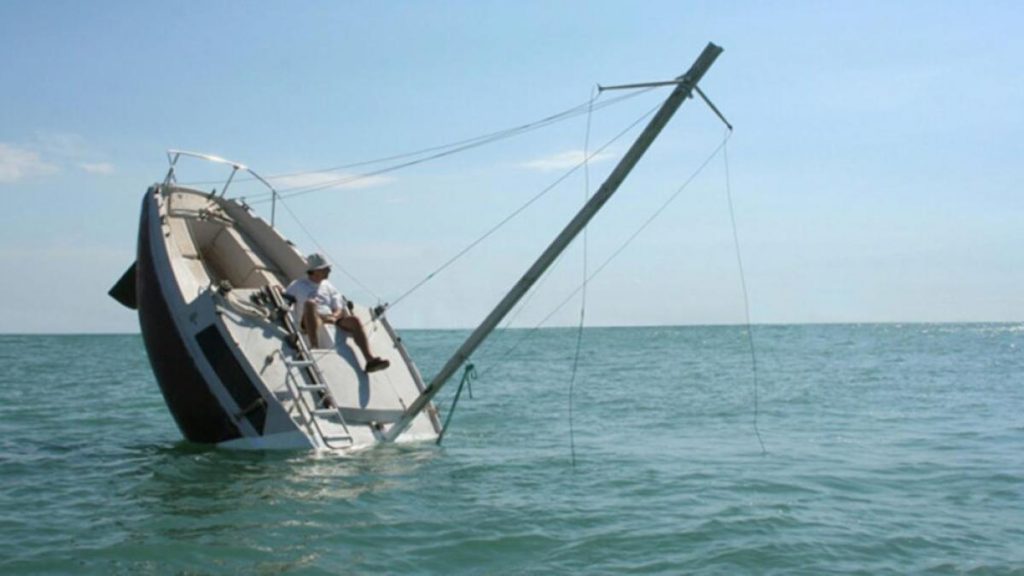
Frequently Asked Questions
How do you prepare your boat for an approaching storm?
To prepare your boat for an approaching storm, take these precautions: slow down, but maintain enough power for headway and steering; close all hatches, windows, and doors to reduce the chance of swamping; and stow unnecessary gear securely to prevent it from causing damage or injury during the storm. Severe Weather: Prepare Your Boat and Passengers
What are the best practices to follow when caught in a storm on a boat?
When caught in a storm on a boat, you should assess the storm's intensity, ensure everyone wears life jackets, have emergency equipment on standby, stow unneeded accessories or gear, close all windows and hatches, disconnect power cords, avoid metallic items, and drive slowly while heading toward safety. If You Are Caught In A Storm In Your Boat, What Should You Do?
How can you stay safe during a severe storm on a boat?
To stay safe during a severe storm on a boat, ensure everyone is wearing life jackets and staying low in the boat to maintain balance. Avoid contact with metal objects, as they could attract lightning. Follow the 30-minute rule by waiting until there has been a 30-minute break between the last time thunder is heard to resume any water activities. Prepare for the Unexpected
What steps should be taken immediately when a storm catches you on the water?
If a storm catches you on the water, you should immediately slow down your boat, maintain enough power for steering, have everyone onboard don life jackets, stow and secure all gear, close all windows, hatches, and doors, disconnect electrical cords (except for your bilge pump), and head toward the nearest shelter or safe area. Boat Caught in Severe Weather: What to Do
How do you maintain communication during a storm when boating?
During a storm, communication is critical. Keep a VHF radio on board and tuned to the appropriate channel to receive weather updates and communicate with nearby vessels, as well as a cellphone in a waterproof case. It's also essential to maintain communication with everyone onboard, ensuring they are aware of situations and actions being taken. Boating in a Storm: What You Should Do if Caught in Severe Storm Conditions
What actions can be taken to prevent capsizing in a boat during a storm?
To prevent capsizing during a storm, keep the boat's weight balanced by having passengers sit low and evenly distributed. Drive slowly and cautiously, maintaining enough power for steering. Make sure all gear, equipment, and personal belongings are stowed and secured. By following these guidelines, you can minimize the risk of capsizing while navigating stormy waters. Severe Weather: Prepare Your Boat and Passengers
Footnotes
Charlie is Editor-in-Chief of Sea Magazine